Filter by
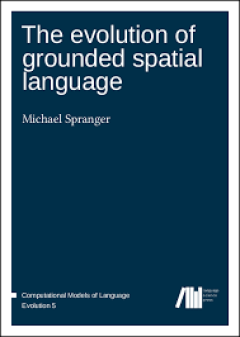
The evolution of grounded spatial language
This book presents groundbreaking robotic experiments on how and why spatial language evolves. It provides detailed explanations of the origins of spatial conceptualization strategies, spatial categories, landmark systems and spatial grammar by tracing the interplay of environmental conditions, communicative and cognitive pressures. The experiments discussed in this book go far beyond previous …
- Edition
- -
- ISBN/ISSN
- 9783944675466
- Collation
- -
- Series Title
- -
- Call Number
- -
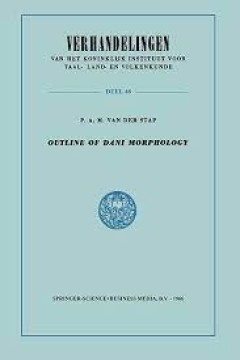
The SenticNet Sentiment Lexicon: Exploring Semantic Richness in Multi-Word Co…
The research and its outcomes presented in this book, is about lexicon-based sentiment analysis. It uses single-, and multi-word concepts from the SenticNet sentiment lexicon as the source of sentiment information for the purpose of sentiment classification. In 6 chapters the book sheds light on the comparison of sentiment classification accuracy between single-word and multi-word concepts, …
- Edition
- -
- ISBN/ISSN
- 978-3-319-38971-4
- Collation
- -
- Series Title
- -
- Call Number
- -
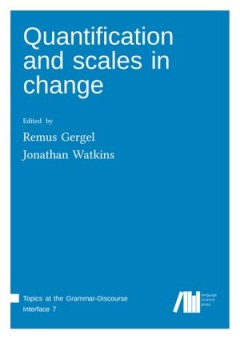
Quantification and scales in change
This volume contains thematic papers on semantic change which emerged from the second edition of Formal Diachronic Semantics held at Saarland University. Its authorship ranges from established scholars in the field of language change to advanced PhD students whose contributions have equally qualified and have been selected after a two-step peer-review process. The key foci are variablity and di…
- Edition
- -
- ISBN/ISSN
- 9783961102655
- Collation
- -
- Series Title
- Topics at the Grammar-Discourse Interface 7
- Call Number
- 401.43 QUA
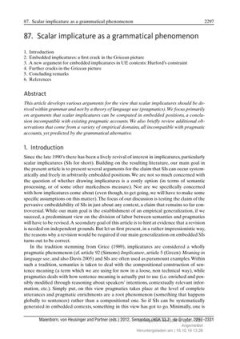
Chapter 87 Scalar implicature as a grammatical phenomenon
This article develops various arguments for the view that scalar implicatures should be de-rived within grammar and not by a theory of language use (pragmatics). We focus primarily on arguments that scalar implicatures can be computed in embedded positions, a conclusion incompatible with existing pragmatic accounts. We also briefly review additional observations that come from a variety of empi…
- Edition
- -
- ISBN/ISSN
- 9783110253382
- Collation
- -
- Series Title
- -
- Call Number
- -
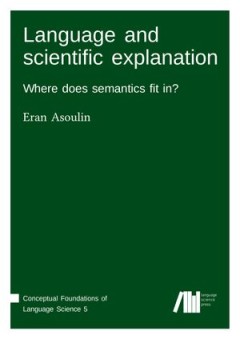
Language and scientific explanation : Where does semantics fit in?
This book discusses the two main construals of the explanatory goals of semantic theories. The first, externalist conception, understands semantic theories in terms of a hermeneutic and interpretive explanatory project. The second, internalist conception, understands semantic theories in terms of the psychological mechanisms in virtue of which meanings are generated. It is argued that a fruitfu…
- Edition
- -
- ISBN/ISSN
- 978-3-96110-263-1
- Collation
- -
- Series Title
- Conceptual Foundations of Language Science 5
- Call Number
- 401.3 ASO l
 Computer Science, Information & General Works
Computer Science, Information & General Works  Philosophy & Psychology
Philosophy & Psychology  Religion
Religion  Social Sciences
Social Sciences  Language
Language  Pure Science
Pure Science  Applied Sciences
Applied Sciences  Art & Recreation
Art & Recreation  Literature
Literature  History & Geography
History & Geography